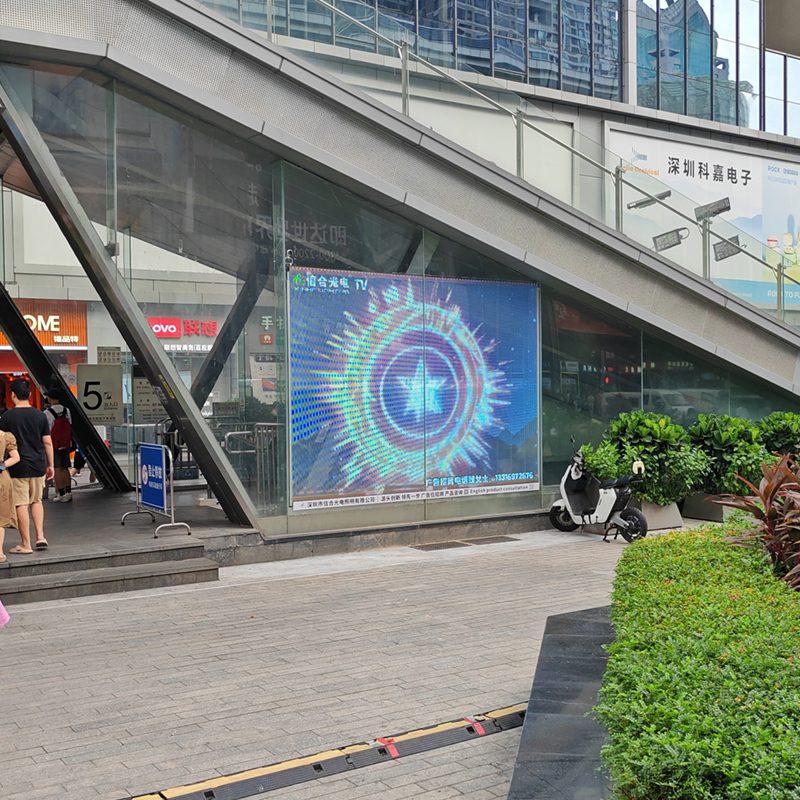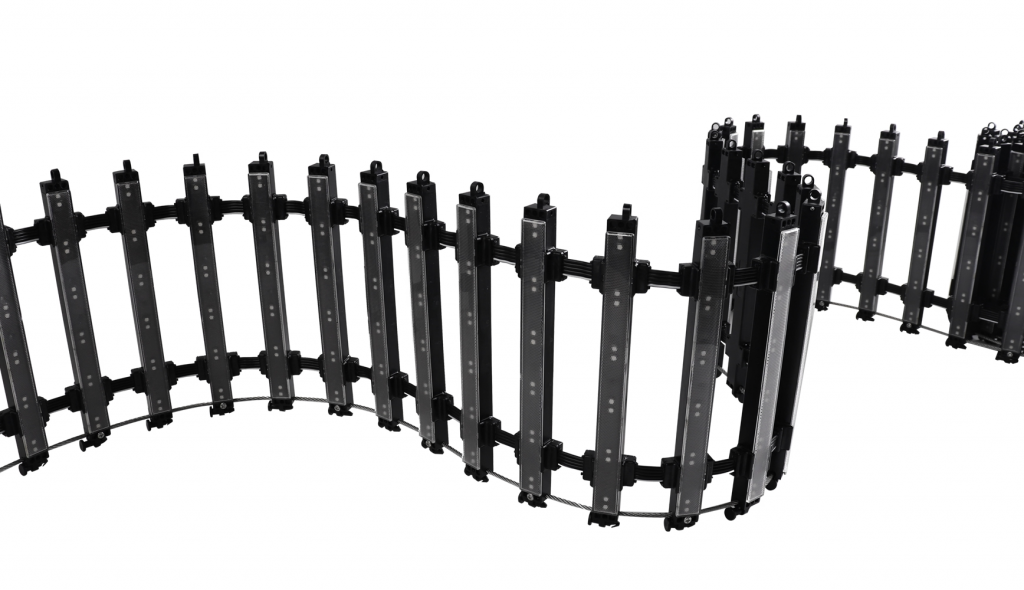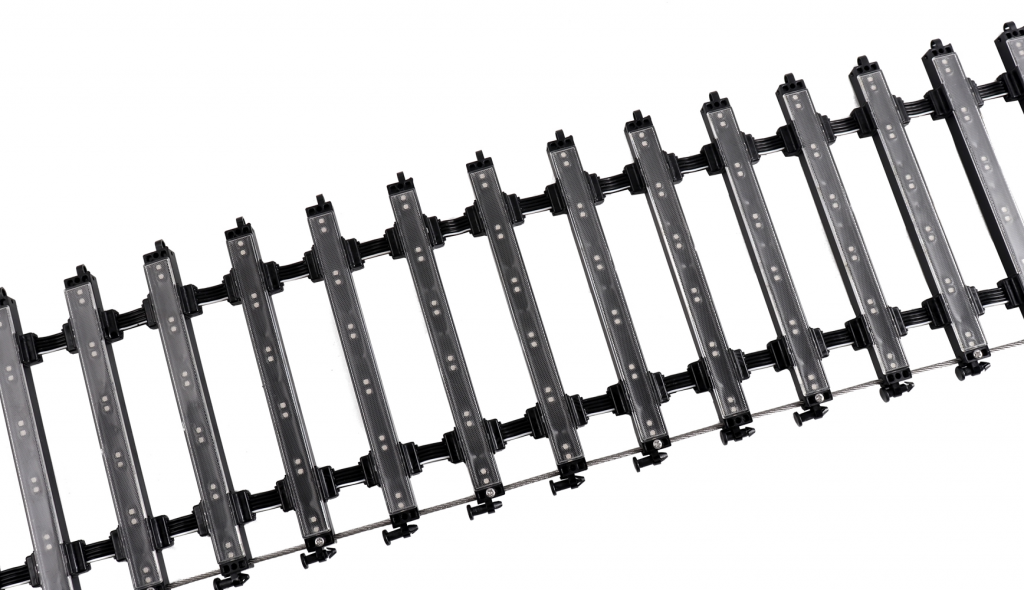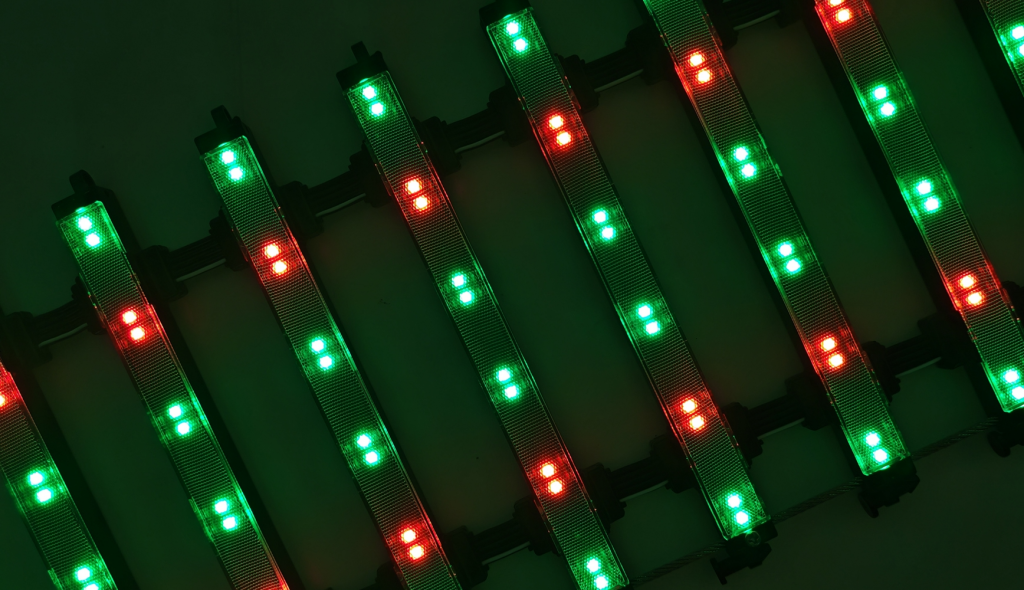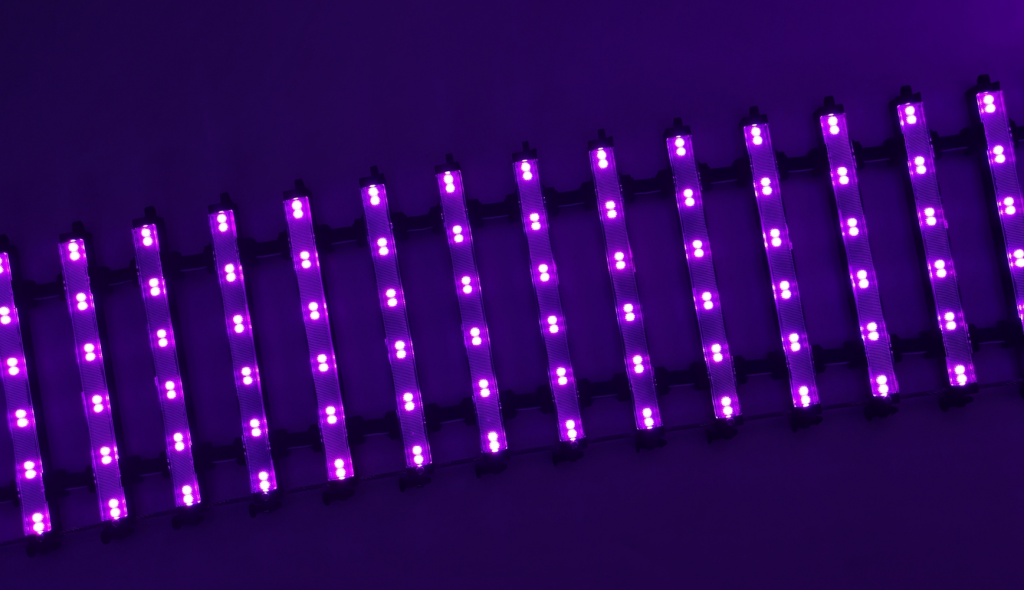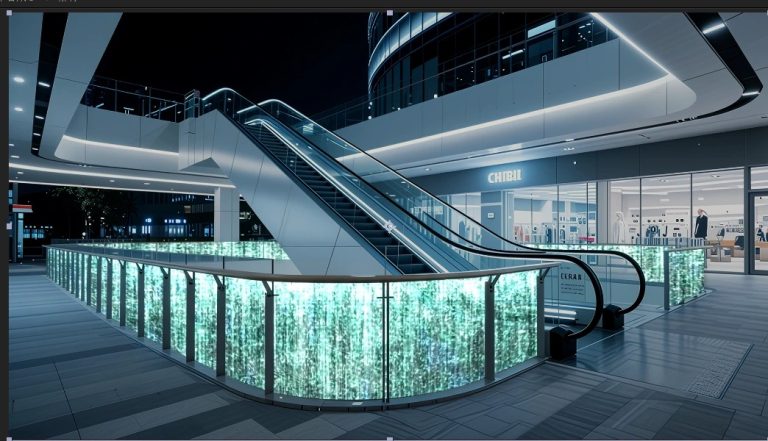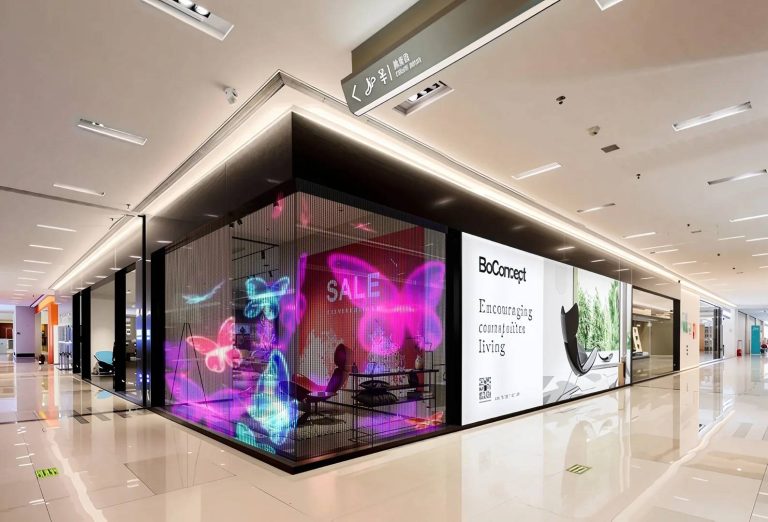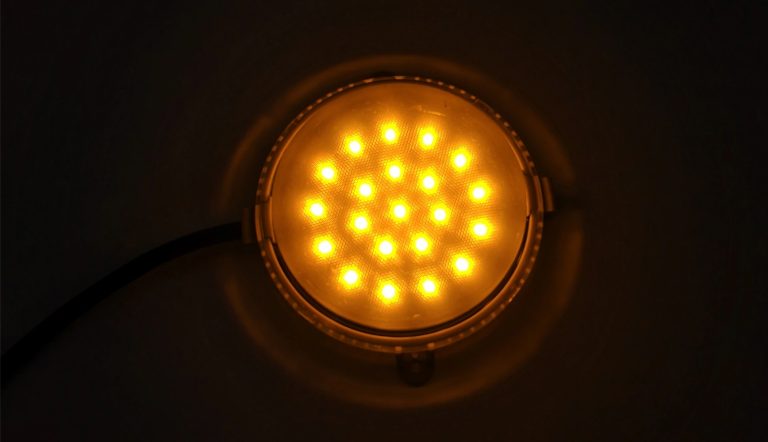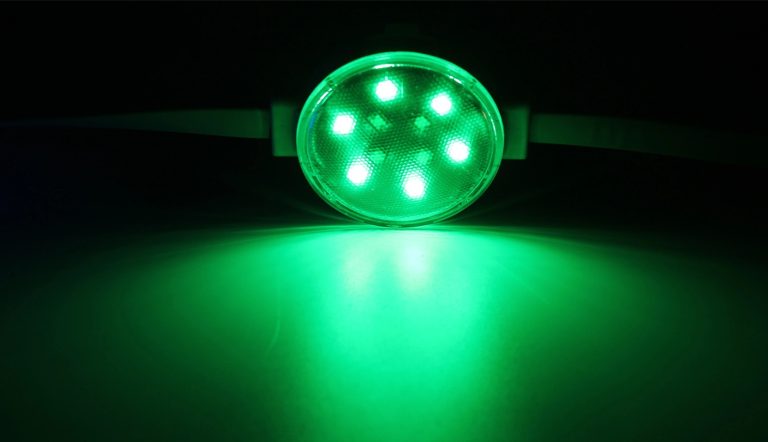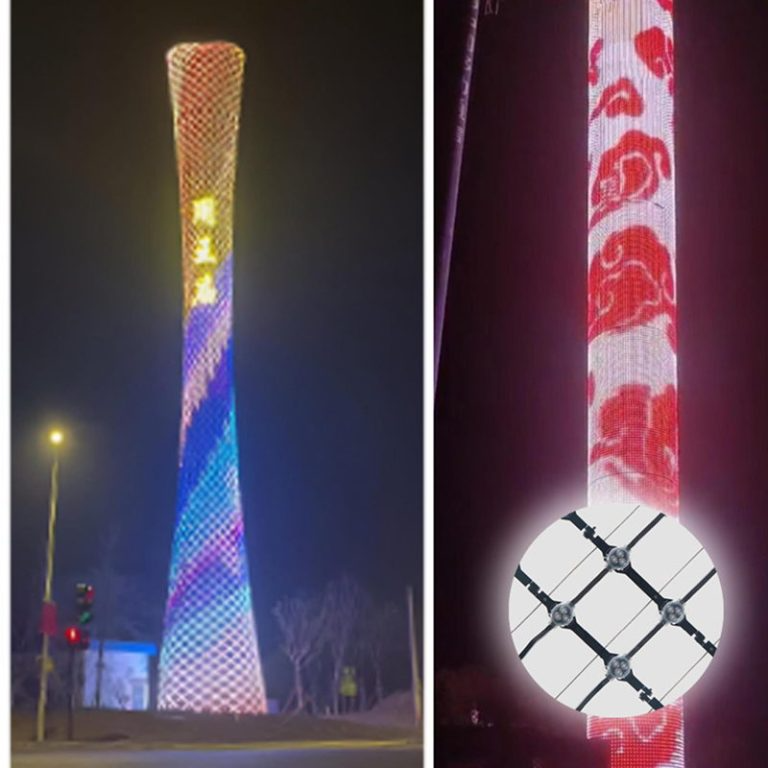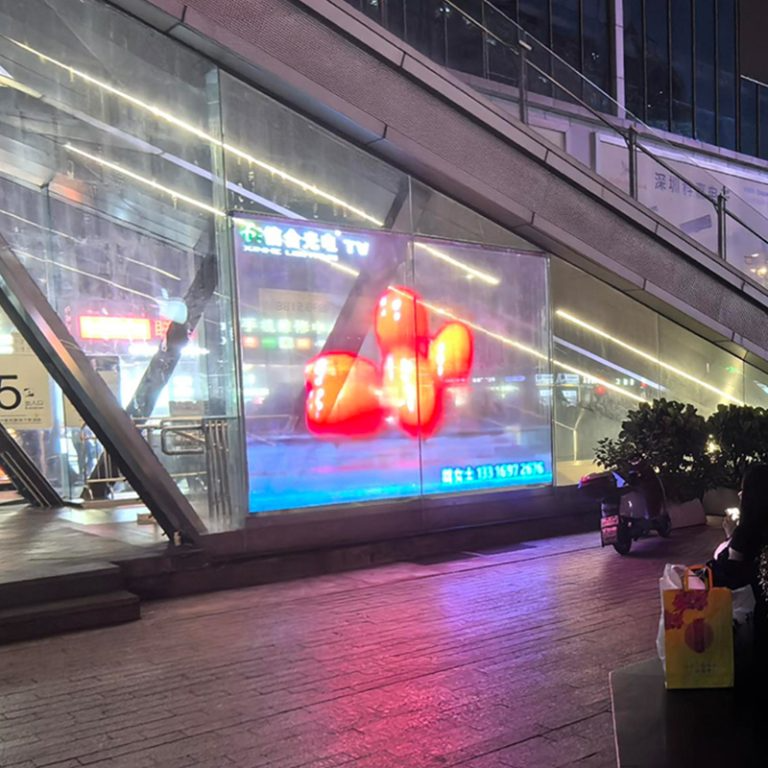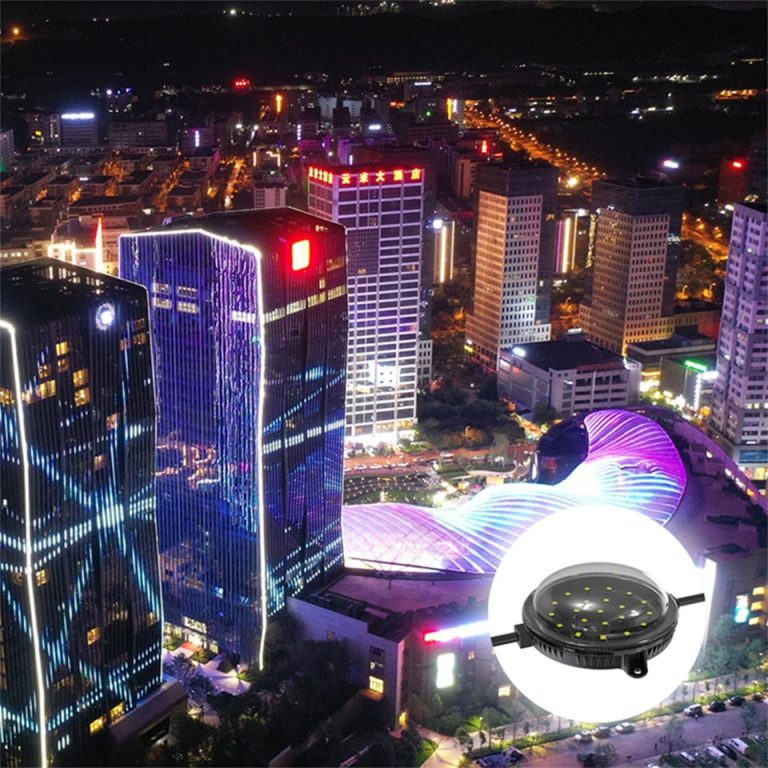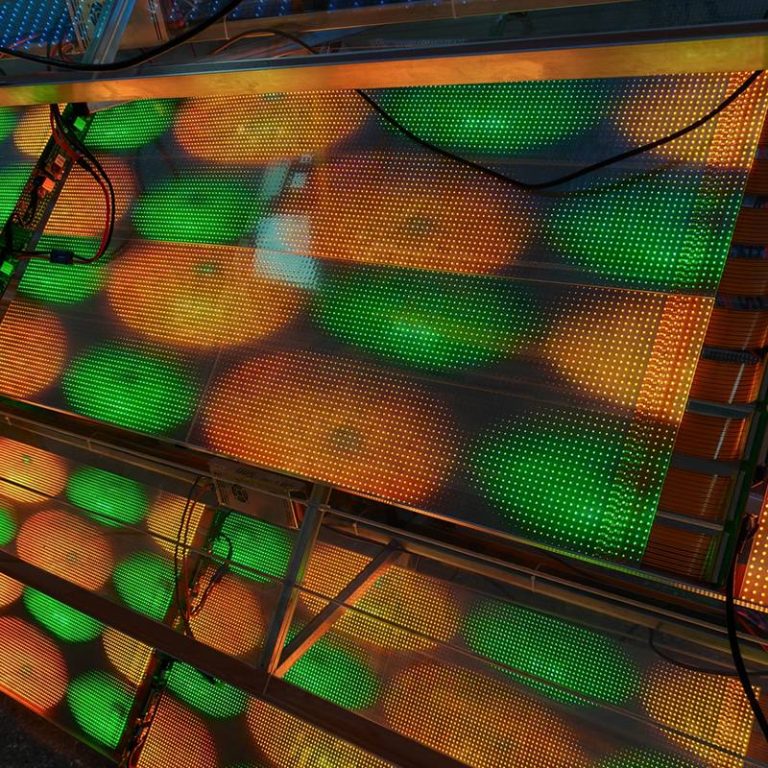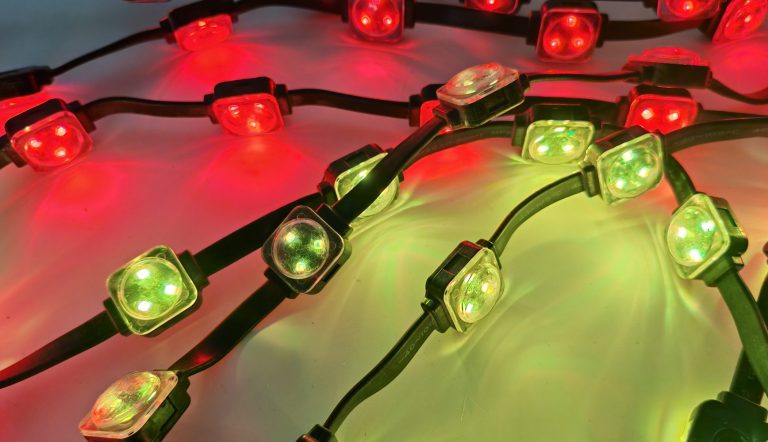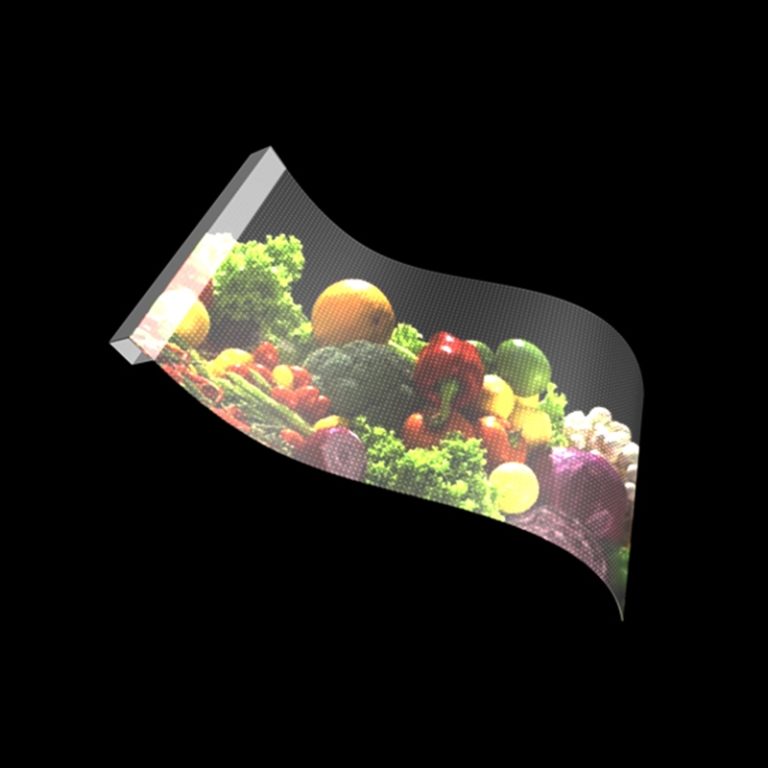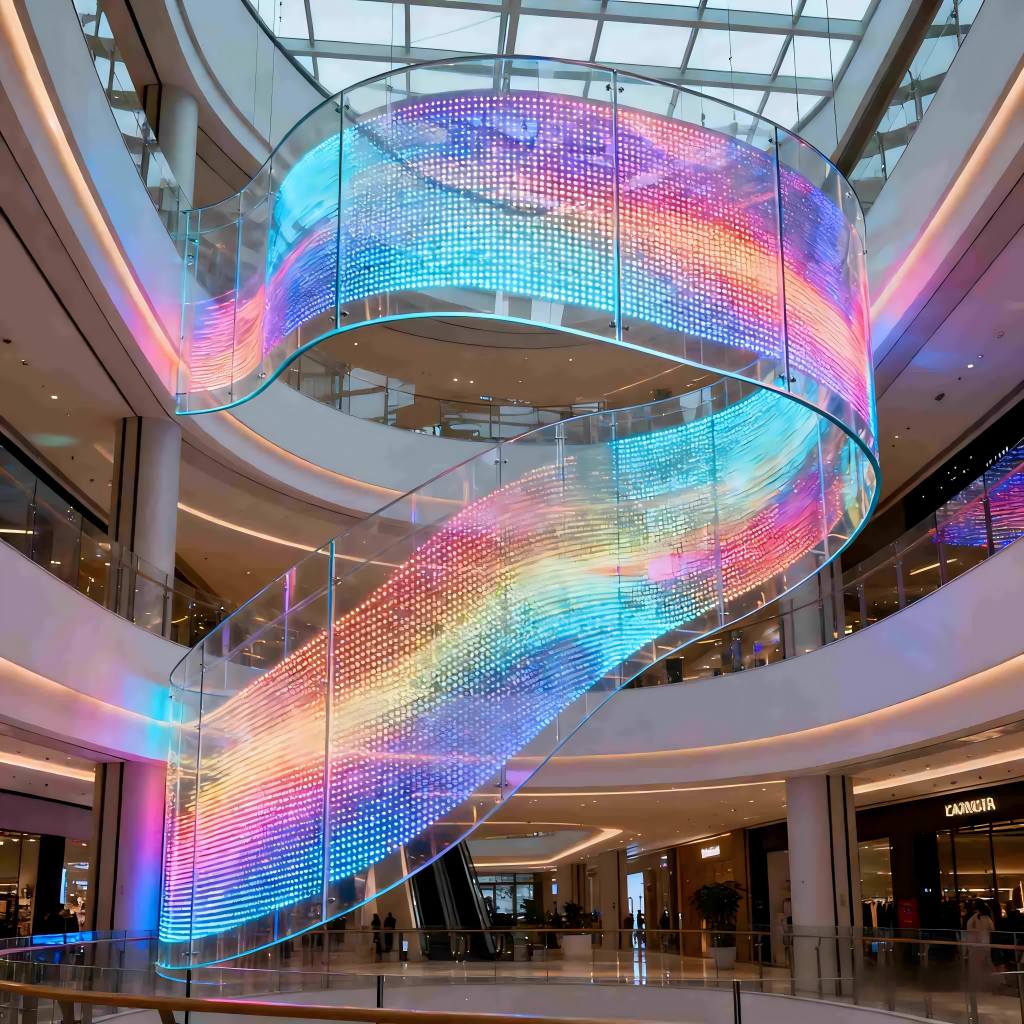
Hey there, if you’re in the world of digital displays or just curious about how tech can jazz up everyday spaces, you’ve probably heard about flexible transparent screens. These aren’t your clunky old TVs—they’re thin, see-through LED films that bend and stick to surfaces like glass without killing the view. But let’s be real: most folks stick to the obvious uses, like big ads in malls. What if I told you there are smarter, wallet-friendly ways to put them to work? Ways that save cash while turning heads. In this post, we’ll dive into five cost-effective applications of flexible transparent screens you might not have thought about. I’ll break it down with real-world examples, some numbers to back it up, and tips from the field. Stick around; you might find one that fits your next project perfectly.
Why Flexible Transparent Screens Are a Game-Changer for Budget-Conscious Projects
First off, a quick rundown on what makes these screens tick. Picture this: a film that’s only about 1.5mm thick, weighing under 3kg per square meter, with transparency hitting up to 95%. That means light pours through, and from a few meters back, it’s like the screen isn’t even there. No heavy frames needed—just slap it on glass or a curved wall, plug it in, and you’re good. Costs? They start low because installation is a breeze, no steel structures required, and power use is efficient—averaging around 200W per square meter. I’ve seen projects where switching to these cut setup costs by 30-40% compared to traditional LEDs. But enough basics; let’s get to the applications that fly under the radar.
Application 1: Revamping Small Retail Windows Without Breaking the Bank
You know those mom-and-pop shops with plain glass fronts? Flexible transparent screens can turn them into dynamic billboards overnight. Imagine a corner bakery in a bustling city neighborhood. Instead of static posters that fade in the sun, they paste a P10 model screen (that’s 10mm pixel pitch for crisp images) right on the window. During the day, it shows mouthwatering videos of fresh pastries, but customers inside still see the street clearly—no blocked views.
Why cost-effective? Setup takes hours, not days, and skips pricey renovations. One case I came across: a boutique in Shenzhen swapped out neon signs for these screens and slashed energy bills by half, thanks to the low 200W average draw. Plus, with a lifespan over 100,000 hours, you’re not replacing bulbs every month. Haven’t considered this? It’s perfect for seasonal promos—Halloween themes one week, holiday deals the next—all programmable via apps like Nova or Carlet. Just think: more foot traffic without the big spend.
Application 2: Enhancing Office Partitions for Hybrid Workspaces
Offices are evolving, right? With everyone splitting time between home and desk, flexible transparent screens offer a sneaky way to make dividers multifunctional. Stick them on glass walls in a co-working space, and suddenly you’ve got privacy on demand. A P6 screen (6mm pitch for finer details) can display company memos, virtual backgrounds for Zoom calls, or even ambient art during downtime.
Here’s the money angle: Traditional smart glass costs a fortune—up to $100 per square foot installed. These LED films? Closer to $50-70, and they add color and interactivity. In a real setup at a tech firm, they used them to create “focus zones” where screens dim for privacy but light up for team huddles. Energy-wise, max consumption is 600W/m², but it rarely hits that. I remember chatting with a designer who said this cut their partitioning budget by 25%, and employees loved the vibe. It’s one of those applications where the ROI sneaks up on you—boosted productivity from cooler spaces, without the headache of wires everywhere.
Oh, and a side note: if your office has curved glass dividers, these screens fold right around them. No more awkward gaps.
Application 3: Interactive Museum Exhibits on a Shoestring
Museums often struggle with budgets, but flexible transparent screens can breathe life into static displays. Picture overlaying one on a glass case holding ancient artifacts. A P4 model (4mm pitch for ultra-sharp Full HD) projects animations or info overlays, making history pop without touching the exhibits.
Cost savings here are huge. Custom enclosures for projectors can run thousands; these screens? Install with double-sided tape, and you’re set. A gallery in Asia I read about used them for a temporary exhibit on local culture—transparency kept the artifacts visible, while videos explained context. Total cost: under $10,000 for 20 square meters, versus double that for rigid screens. With 16-bit gray levels and 160-degree viewing angles, visitors get immersed from anywhere. Haven’t thought about this? It’s ideal for pop-up events too—easy to remove and reuse, cutting waste and expenses.
One quirky thing: kids love touching them (though they’re tough with IK10 impact resistance), turning education into fun without extra gadgets.
Application 4: Upgrading Public Transport Interiors for Better Rider Experience
Buses, trains, even subway cars—their windows are prime real estate. Flexible transparent screens can turn them into info hubs or ad spaces. A P8 screen (8mm pitch, balanced for distance viewing) pasted inside shows routes, news, or sponsored content, all while letting passengers gaze out.
Why budget-friendly? No drilling or heavy mods needed—just adhere and connect to DC5V power. In a transit project, they reported 40% lower installation costs than embedded monitors, plus ads generate revenue to offset expenses. Brightness up to 3000 cd/m² means it’s visible in daylight, and with IP67-ish durability (though these are indoor-focused), they handle vibrations. Data from one city line: rider satisfaction jumped 15% with real-time updates. It’s an application you haven’t considered if you’re in urban planning—turns dead space into smart, revenue-positive features.
Sometimes, though, glare from sun can be an issue; that’s where anti-reflective coatings come in handy.
Application 5: Home Automation Hacks for Everyday Luxury
Who says these are just for pros? In homes, flexible transparent screens can upgrade shower doors or room dividers into smart surfaces. A P5 model on a bathroom glass plays relaxing videos or mirrors weather updates, all see-through.
The cost win: High-end smart mirrors cost $500+; these start at $200 per panel, DIY-friendly. A homeowner I know fitted one in their kitchen partition—displays recipes while cooking, transparency keeps the space open. Power sip at 80W average for small setups, and with over 100,000-hour life, it’s set-it-and-forget-it. For curved home theaters? They bend seamlessly. This one’s underrated for DIY enthusiasts—adds wow factor without gutting your wallet.
Pro tip: Pair with voice controls for that futuristic feel, but start small to test.
XinHe Lighting: Your Go-To Supplier for Flexible Transparent Screens
If these ideas have you itching to try flexible transparent screens, look no further than Éclairage XinHe. Founded back in 2004 in Shenzhen, China, XinHe has spent two decades honing LED tech, specializing in point light sources and grid screens like these flexible films. They’re all about innovation—think over 80 patents on their “Bean” series—and they’ve powered big projects, from Olympic emblems to urban landscapes. What sets them apart? Strict quality checks via ISO certifications, customizable sizes (no size limits, really), and that high transparency up to 95% with brightness hitting 6000 cd/m². Plus, their team handles everything from design to on-site guidance, ensuring you get reliable, energy-efficient screens that last. Whether you’re a retailer or a designer, XinHe’s got the goods to make your vision real without the hassle.
Conclusion
There you have it—five fresh takes on flexible transparent screens that pack a punch without emptying your pockets. From sprucing up shop windows to smartening homes, these applications show how a little creativity can stretch your budget far. The key? Their lightweight, easy-install nature cuts costs at every turn, while high transparency keeps things practical. If you’re eyeing ways to stand out, give these a shot; the returns in engagement and efficiency are hard to beat.
FAQs
What makes flexible transparent screens cost-effective for small businesses?
Flexible transparent screens shine here because they ditch bulky frames and install in a snap—often just with tape on glass. For a small retail spot, this means low upfront costs (around 30% less than traditional displays) and energy savings from their efficient 200W/m² draw. Plus, they’re reusable for different campaigns, stretching your dollar further.
How do flexible transparent screens handle curved surfaces in applications you haven’t considered?
They fold and conform like a dream, perfect for spots like office dividers or home decor. In museums, for instance, they wrap around exhibit cases without gaps, maintaining 95% transparency. This flexibility opens up creative uses without custom fabrication fees, keeping things budget-friendly.
Are there any hidden costs with these screens in outdoor-ish applications?
Not really, if you pick indoor-focused models for semi-exposed spots like transport windows. They boast IP67-level protection and IK10 impact resistance, so maintenance is minimal. Average lifespan tops 100,000 hours, avoiding frequent replacements—though yeah, factor in occasional cleaning for that crystal-clear look.
Can flexible transparent screens integrate with existing systems easily?
Absolutely, they play nice with controls like Nova or Carlet for seamless programming. In hybrid offices, they sync with video calls or apps, adding value without overhauls. It’s one of those applications you haven’t considered that boosts tech without the compatibility headaches.
What’s the ROI timeline for these in commercial settings?
Typically quick—six to 12 months for retail ads, thanks to increased foot traffic and low power use. In a bakery example, dynamic displays hiked sales 20%, paying off the install fast. Just ensure proper brightness (up to 3000 cd/m²) for your space to maximize impact.

